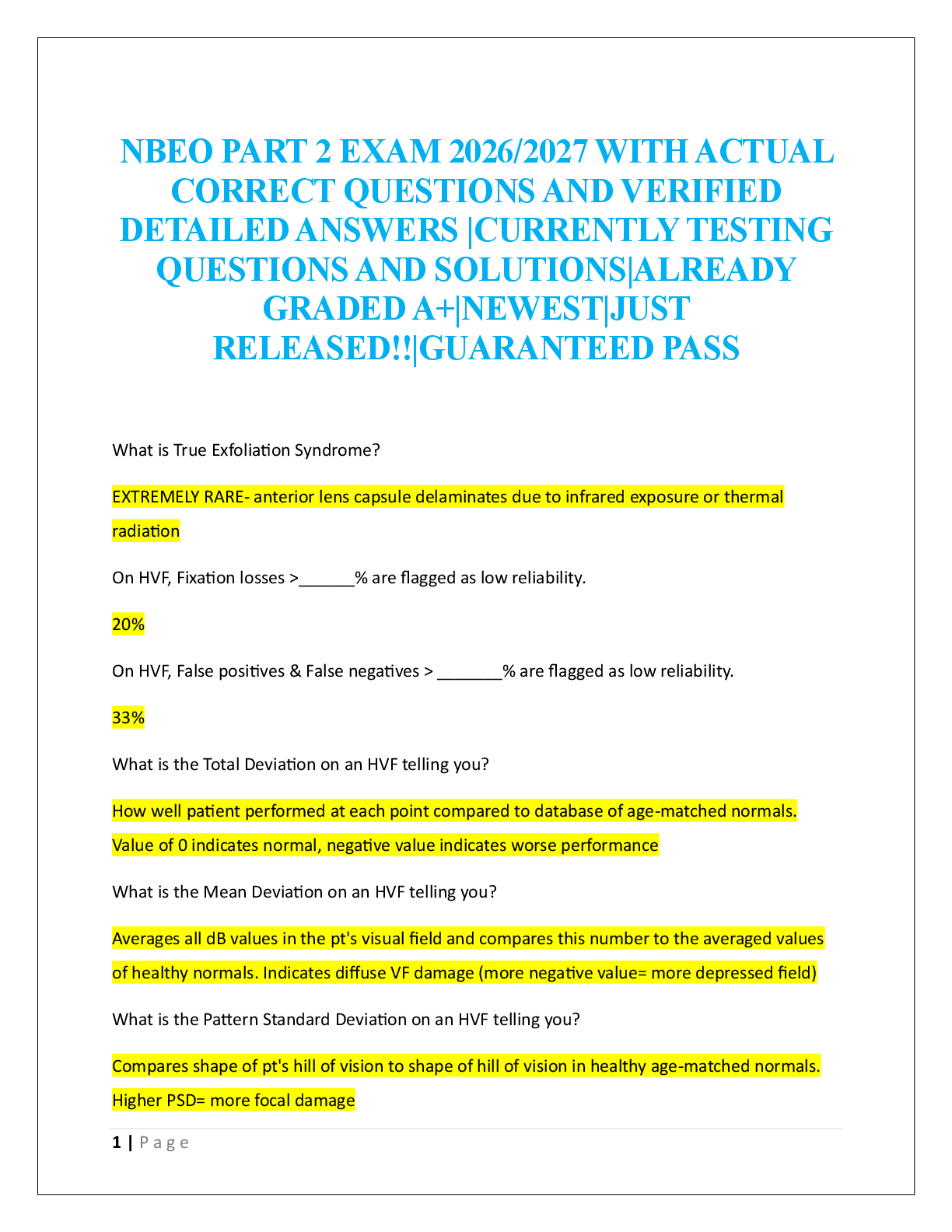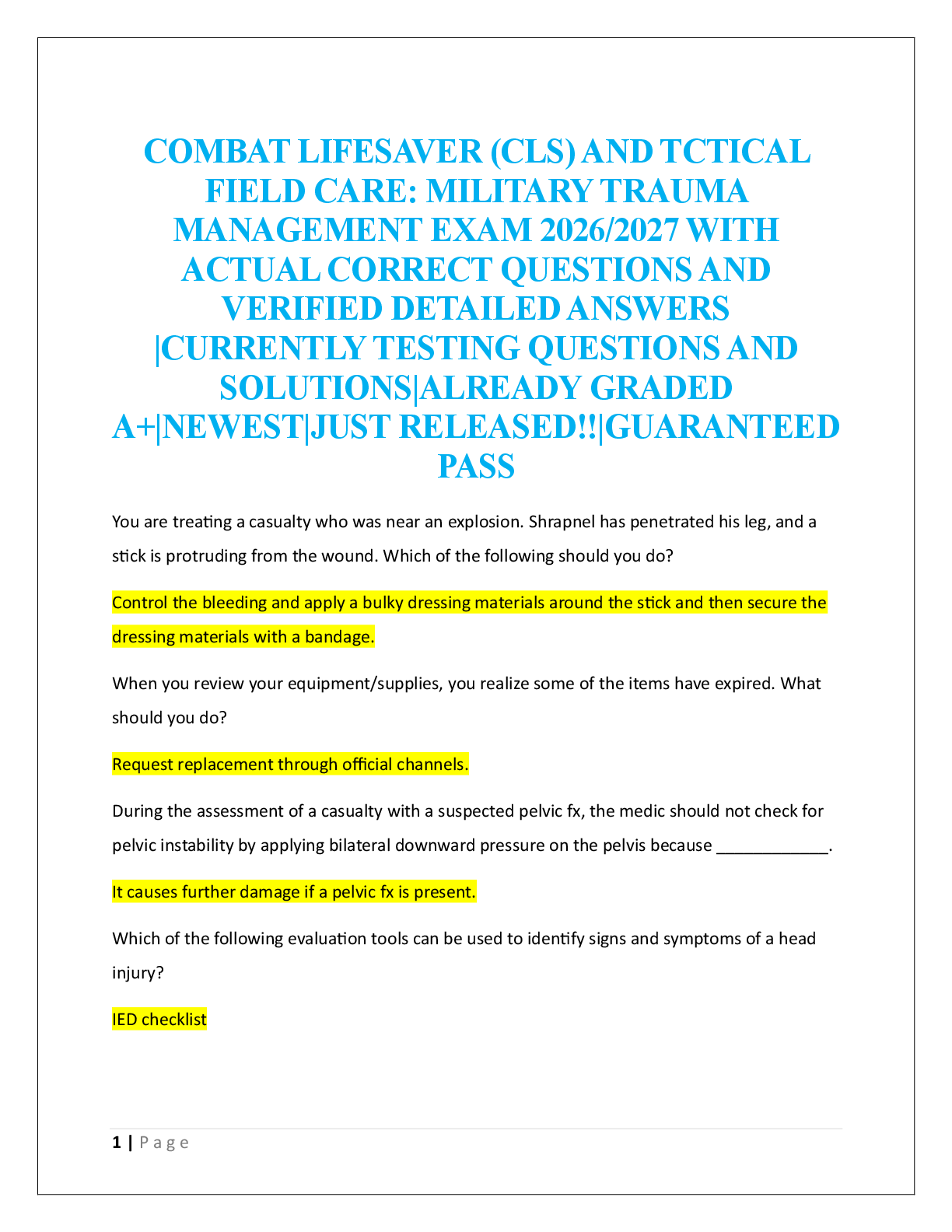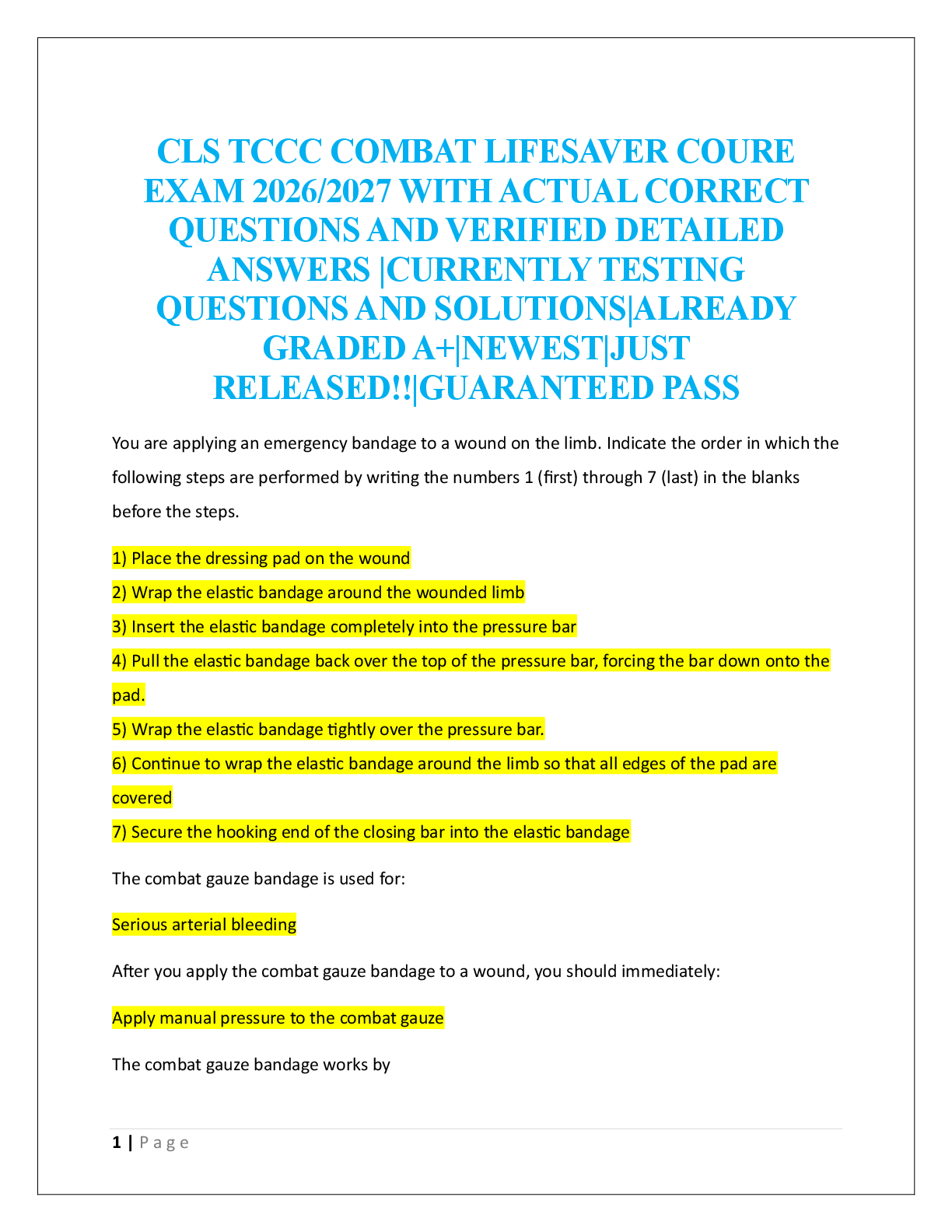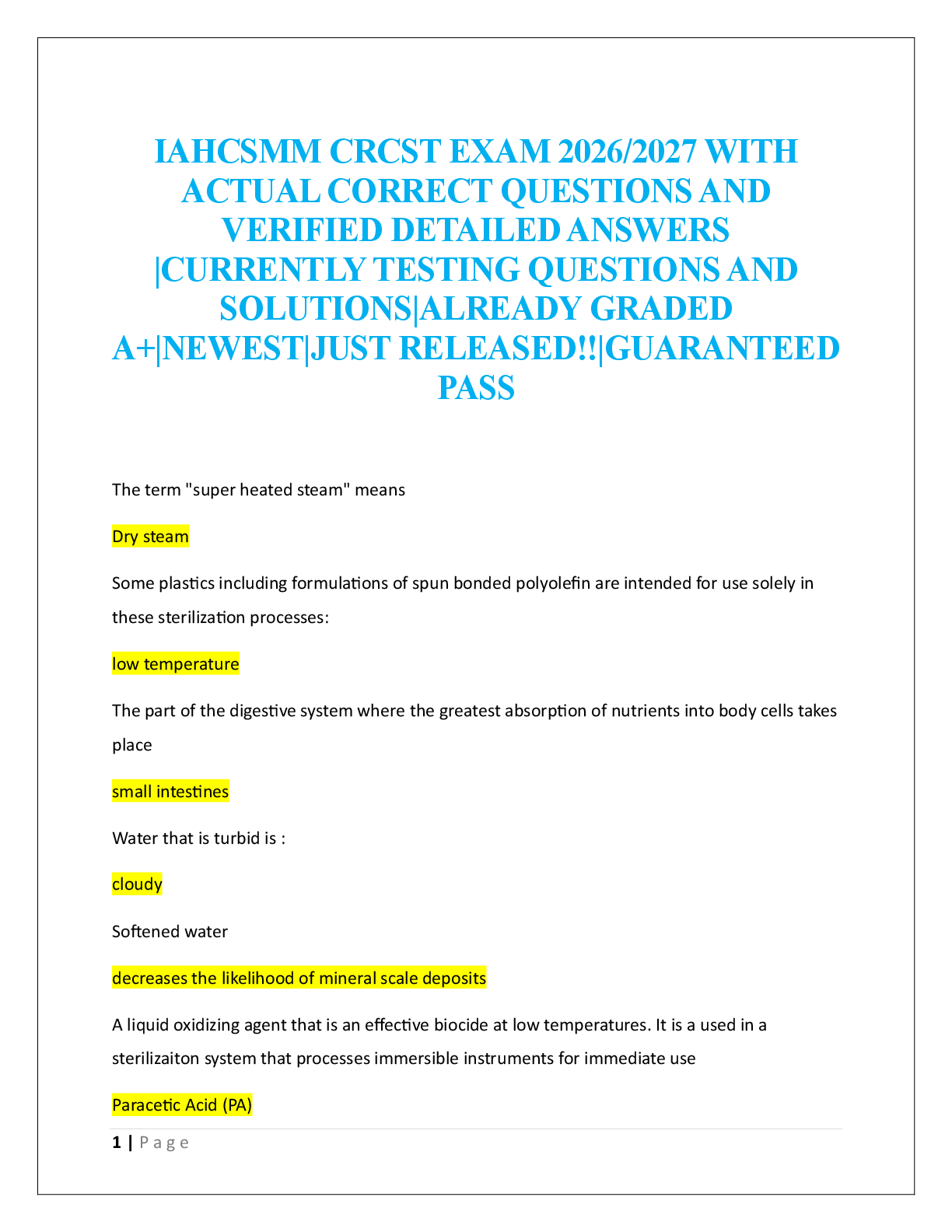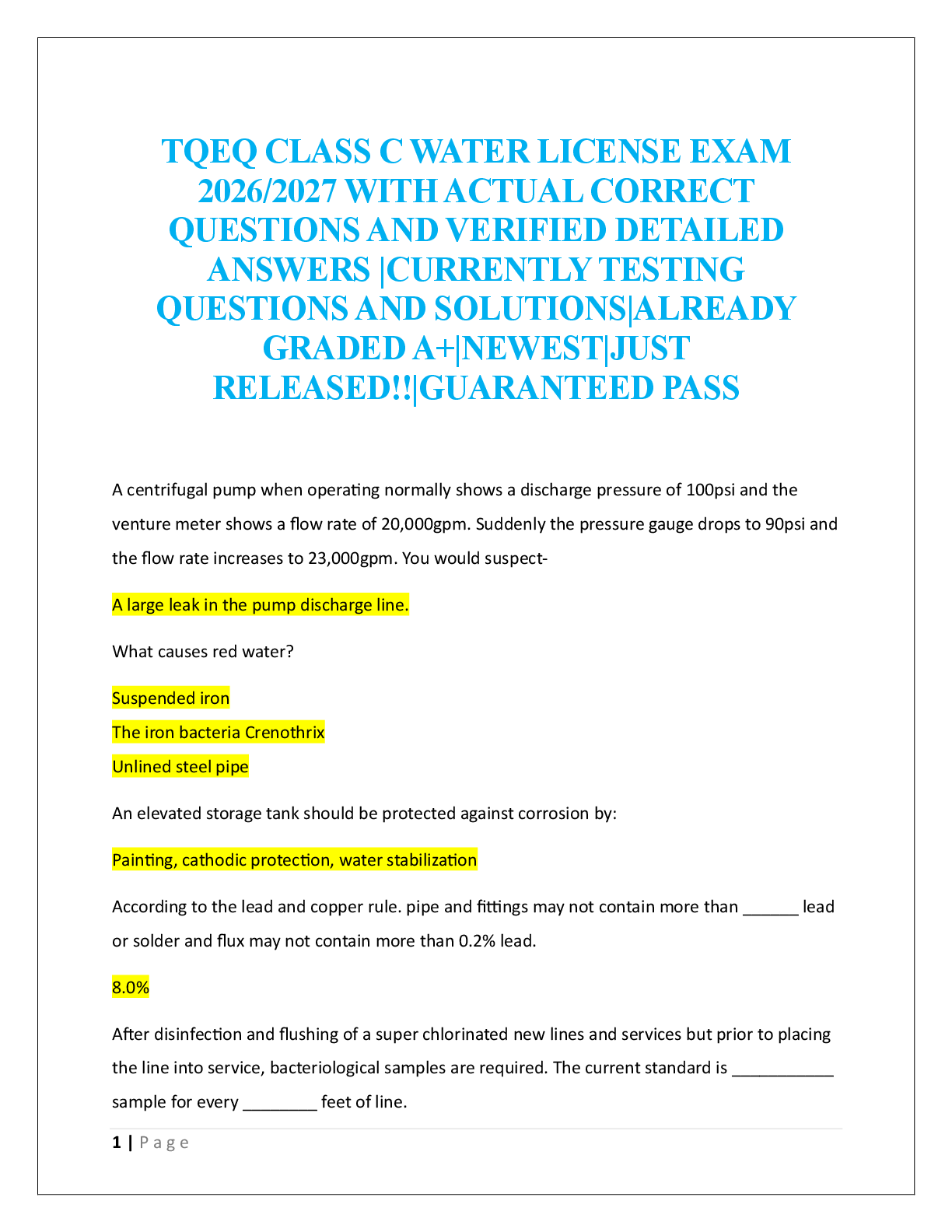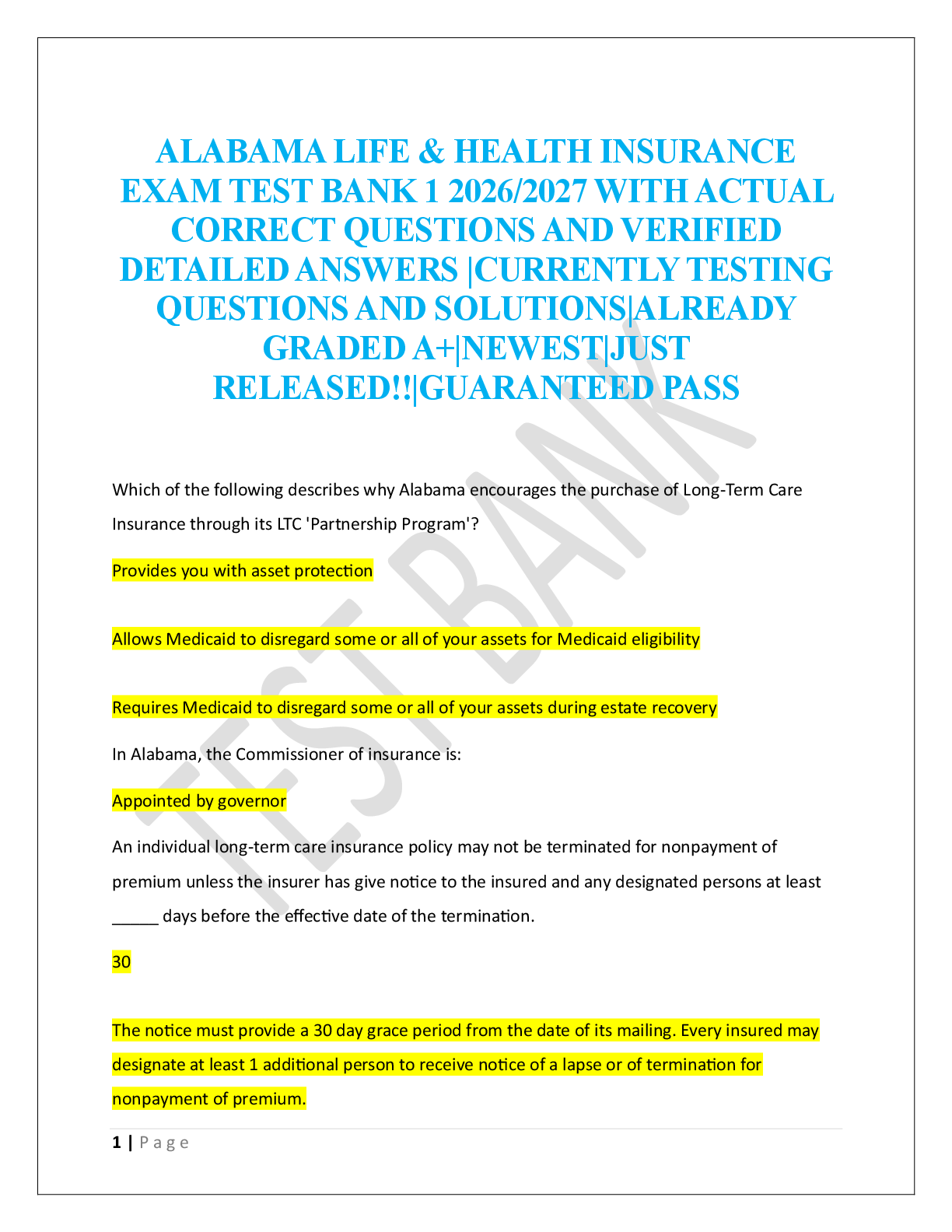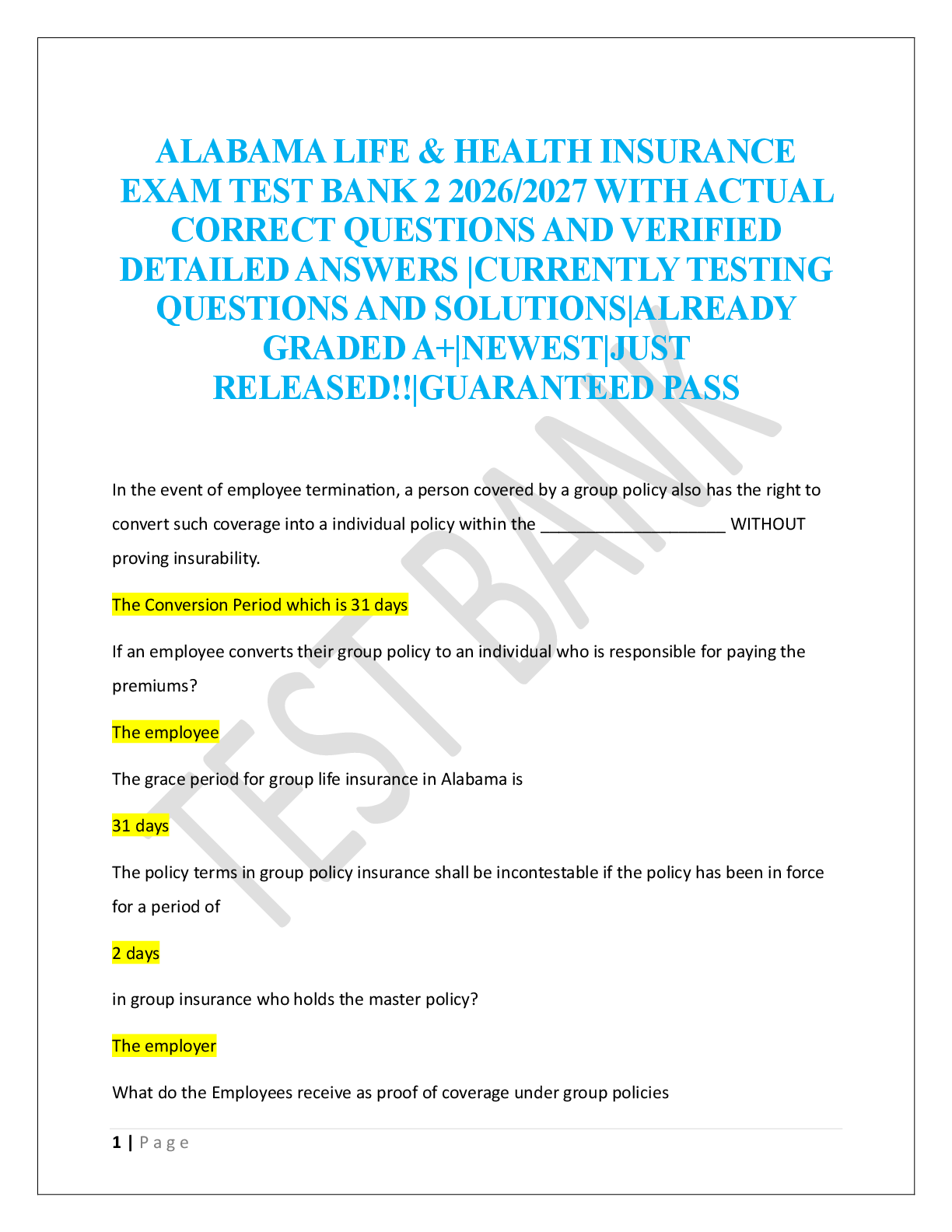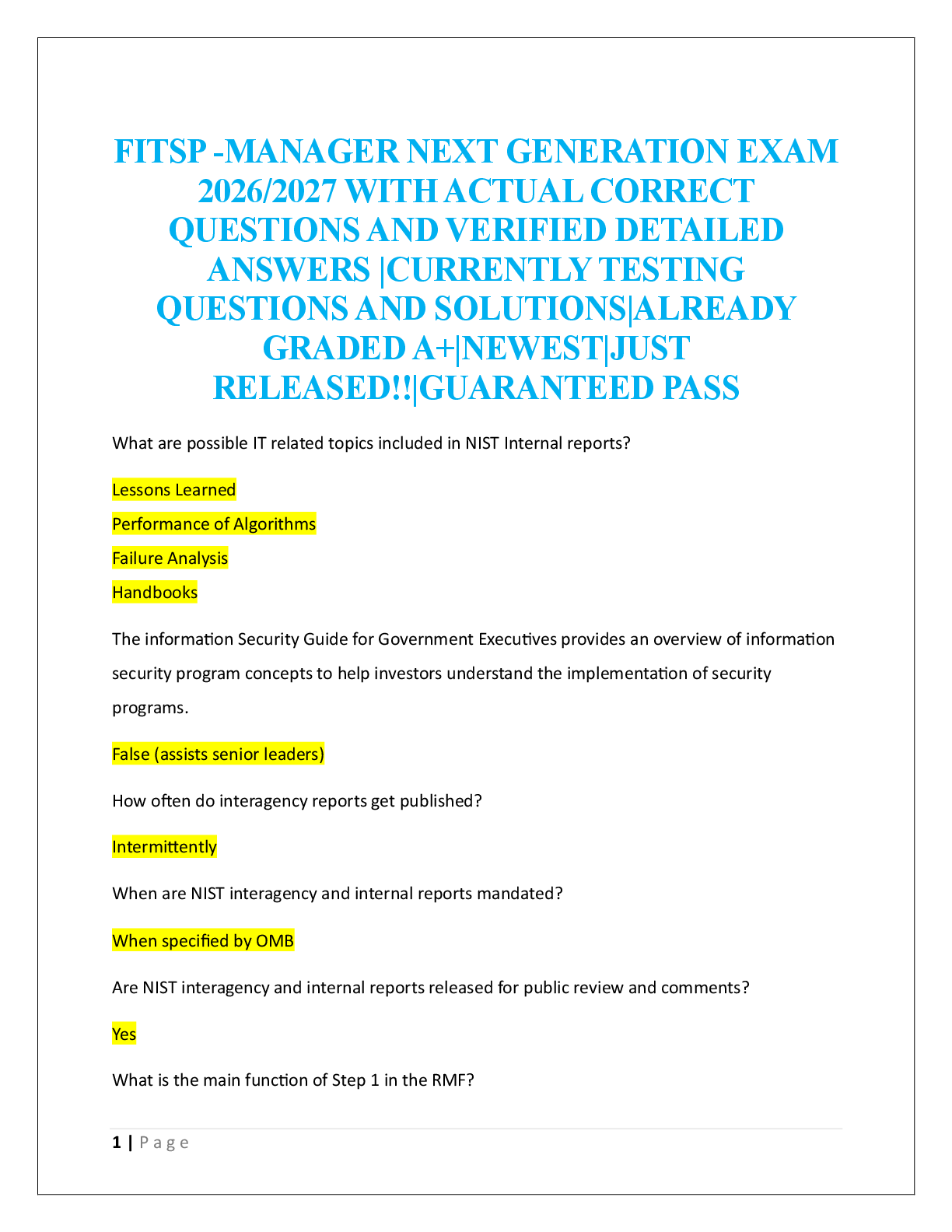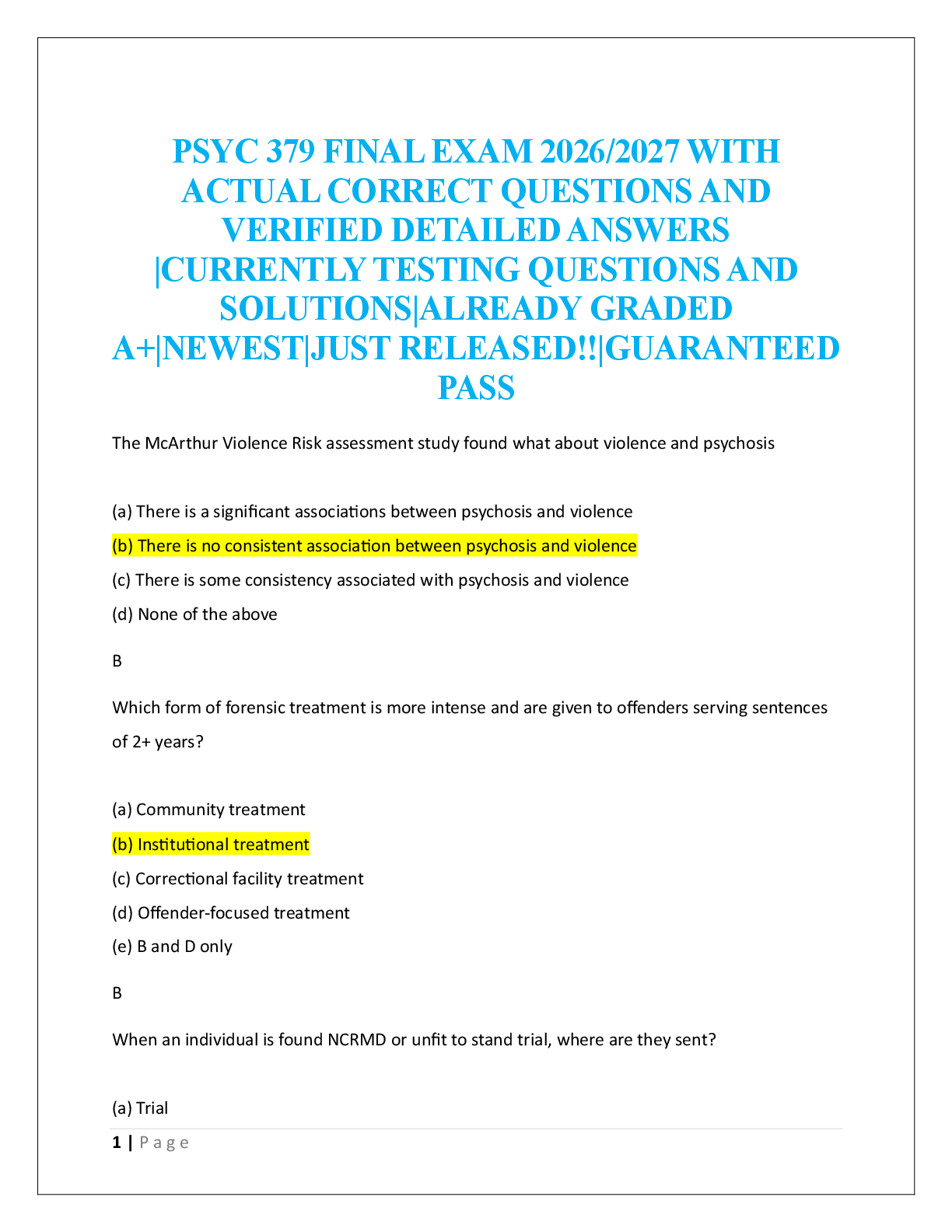*NURSING > EXAM > INTERMEDIATE MED SURG FINAL (100 QUESTIONS AND ANSWERS) VERIFIED, 100% CORRECT (All)
INTERMEDIATE MED SURG FINAL (100 QUESTIONS AND ANSWERS) VERIFIED, 100% CORRECT
Document Content and Description Below
INTERMEDIATE MED SURG FINAL (100 QUESTIONS) 1. Kidney assessment, costovertebral angle a. Costovertebral angle: landmark for locating kidneys. Formed by the rib cage and vertebral column b. Left ... kidney rarely palpable, right kidney lower pole is palpable c. Percussion: Tenderness and pain in the flank area (CVA) may indicate kidney infection or polycystic kidney disease d. Auscultation : Bell is used to auscultate over CVA and upper abdominal quadrants. Auscultate the abdominal aorta and renal arteries for a bruit. If present, it may indicate impaired blood flow to the kidney 2. Multiple sclerosis interventions a. b. Other therapies: i. Spasticity: dorsal-column electrical stimulation, neurectomy, rhizotomy ii. Tremors: thalamotomy or deep brain stimulation iii. Neurologic dysfunction: physical and speech therapies iv. Exercise decreases spasticity, increases coordination, and retrains unaffected muscles to substitute for impaired ones v. Water exercise is important, patient is able to have more control over the body c. During an acute exacerbation patient may be immobile and on bedrest i. Interventions include respiratory and urinary tract infection prevention ii. Pressure ulcer prevention d. Tell pt. to avoid fatigue, extremes of heat and cold, and exposure to infection e. Encourage early and vigorous treatment of infection f. Teach pt. to achieve good balance of exercise and rest g. Minimize caffeine, and eat nutritious meals (high in fiber may help with constipation) h. Bladder control is a major problem: Anticholinergics may help with spasticity, may need to teach patient self-catheterization Some Goals • Maintain or improve muscle strength and mobility • Use assistive devices for ambulation • Maintain urinary continence 3. Addison’s disease, assessment Addisons: hypofunction of adrenal cortex. Glucocorticoids, mineralocorticoids and androgens are reduced. Manifestations • Weakness anf fatigue • Weight loss • Anorexia • Increased ACTH causes bronze-colored skin hyperpigmentation (at pressure points such as joints and palmar creases) • Orthostatic hypotension • Salt craving • Nausea and vomiting • Diarrhea -Serum cortisol levels; decreased in adrenal unsufficiency -Blood glucose levels; decreased -serum sodium levels; decreased -Serum potassium levels; increased -BUN levels; increased Assessment Health History • Weight loss • Skin color changes • Nausea and vomiting • Anorexia • Abdominal pain • Weakness • Amenorrhea • Confusion • Intolerance of stress Physical Assessment • Height and weight • Monitor vital signs (hypotension may occur due to crisis) • Skin color • Hair quality • Muscle size and strength 4. ESRD, manifestations and specific assessments, GFR 15 or less [Show More]
Last updated: 3 years ago
Preview 1 out of 39 pages

Buy this document to get the full access instantly
Instant Download Access after purchase
Buy NowInstant download
We Accept:

Reviews( 0 )
$20.00
Can't find what you want? Try our AI powered Search
Document information
Connected school, study & course
About the document
Uploaded On
Jan 26, 2021
Number of pages
39
Written in
All
Additional information
This document has been written for:
Uploaded
Jan 26, 2021
Downloads
0
Views
134


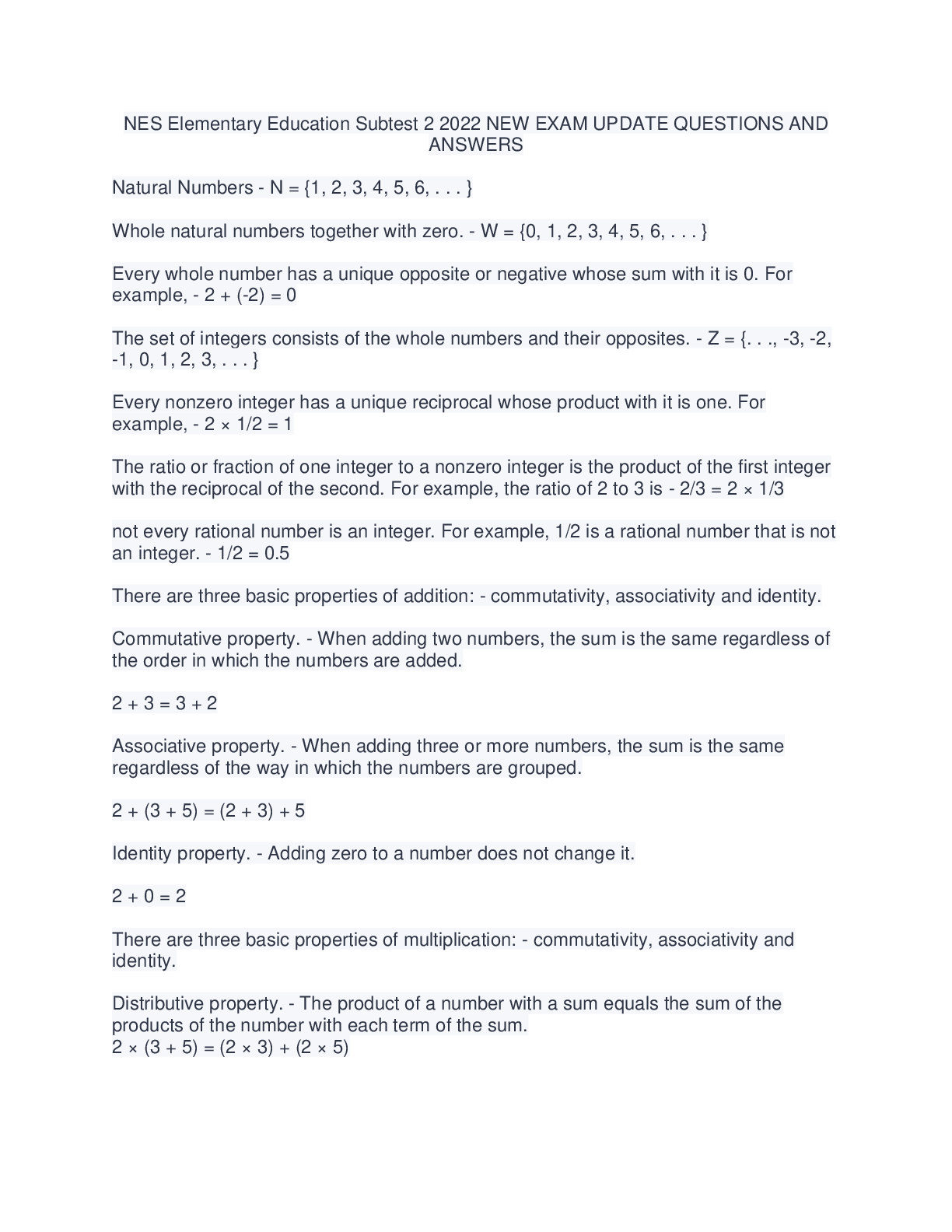
.png)



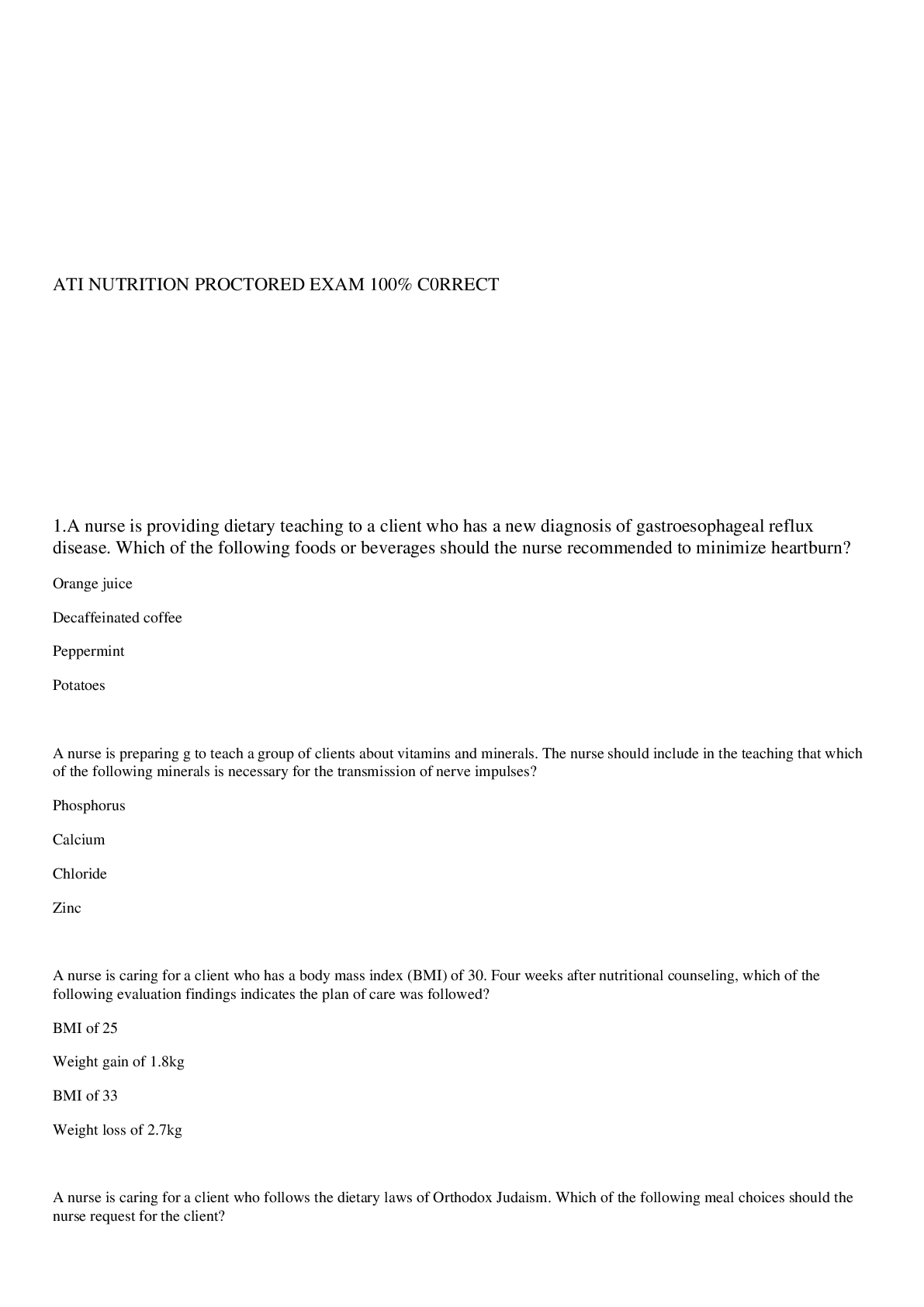
.png)
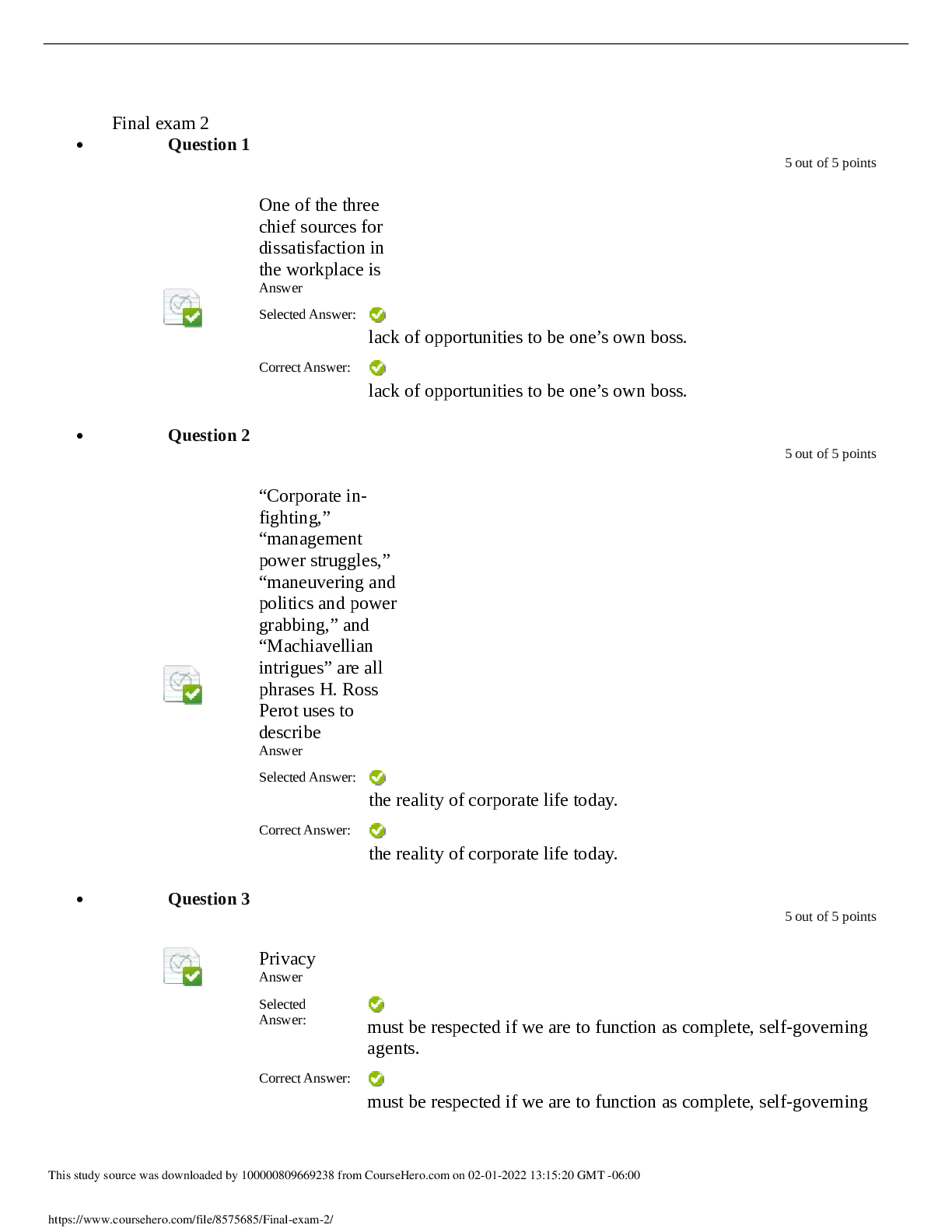
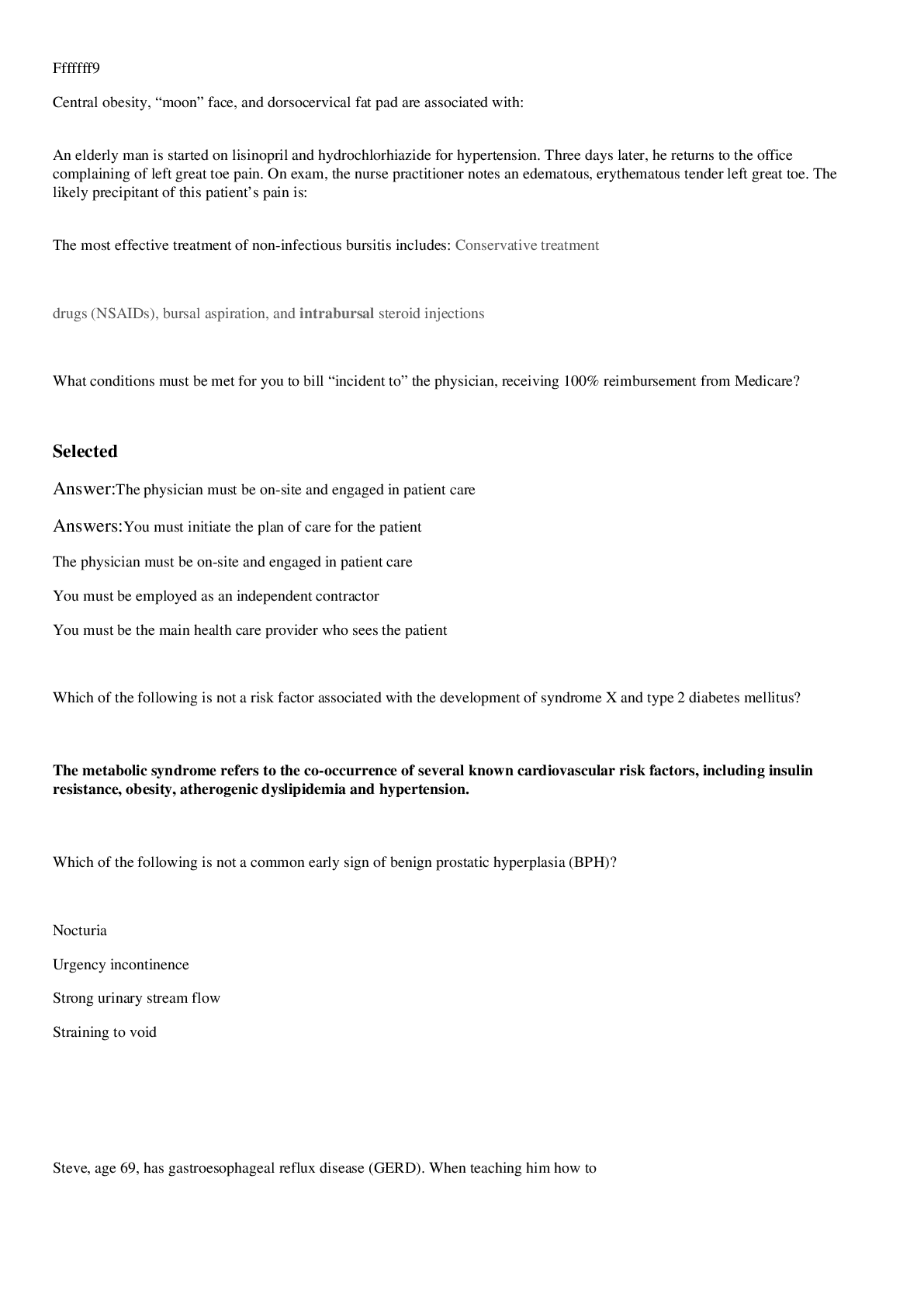
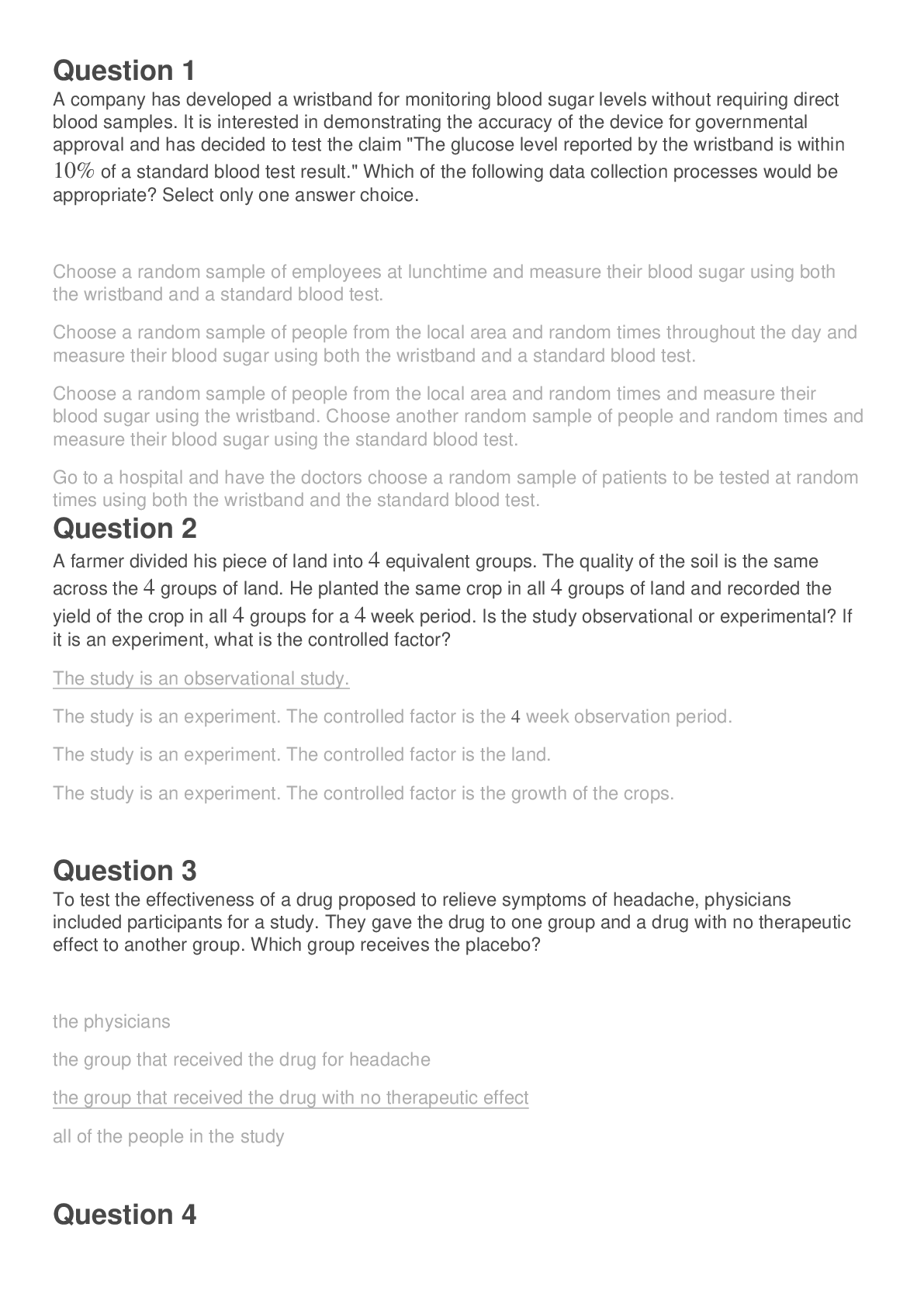
.png)
